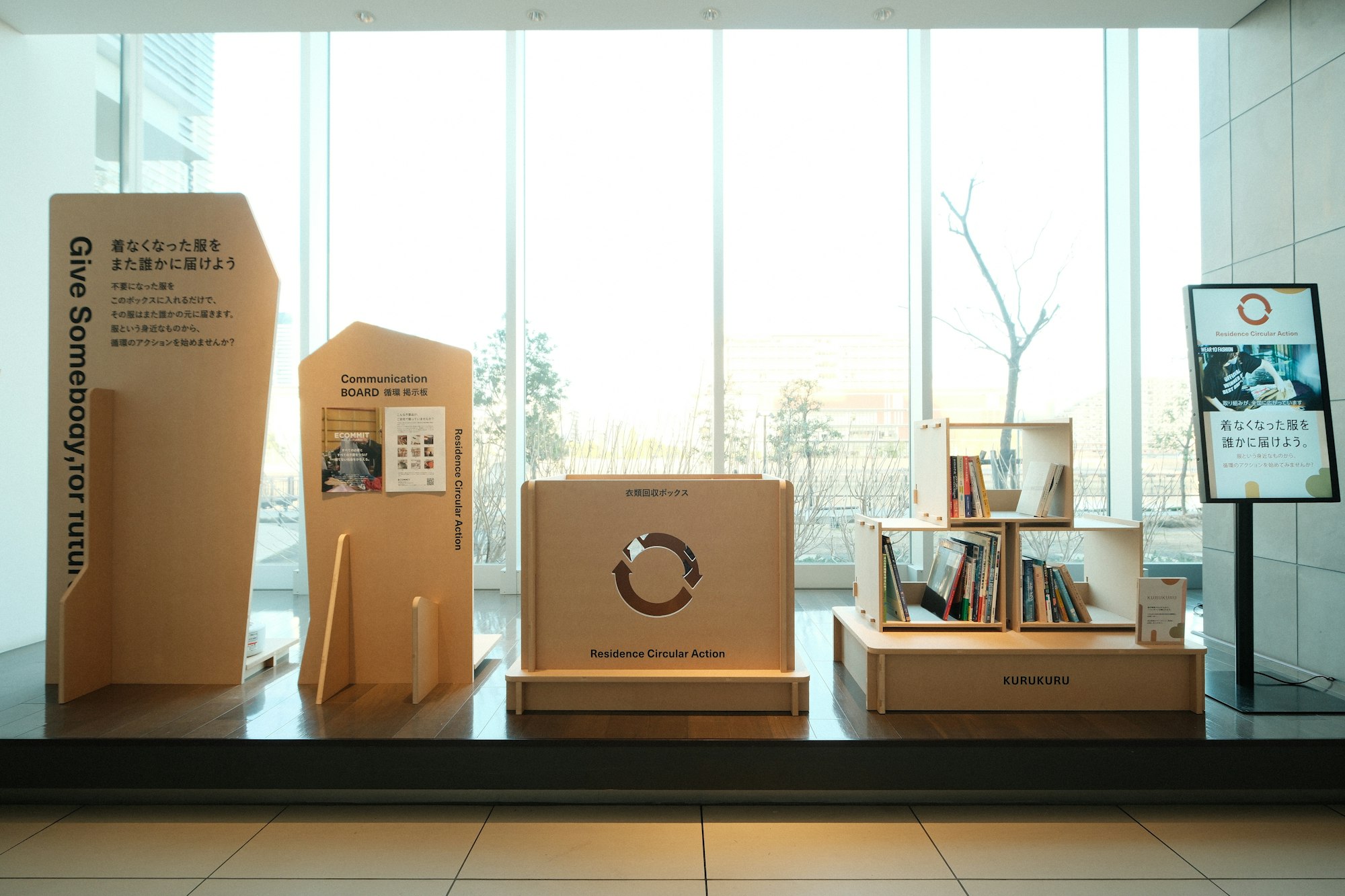Realizing a "no throw-away" lifestyle. Creating a new value of a home that is good for you and the earth, together with residents.
2023.07.15


Selling and buying are not the end of the story,Aiming to create residences that are more attractive the longer you live in them
Mitsui Fudosan Residential and ECOMMIT, a recycling-oriented trading company committed to the earth, will conduct a demonstration experiment of the "Residence Circular Action" to collect unwanted items, mainly clothing, from residents in common areas of condominiums as part of a new initiative to realize a recycling-oriented lifestyle from the residence. As part of a new initiative to realize a recycling-oriented lifestyle from one's residence, ECOMMIT started a demonstration experiment of "Residence Circular Action" on January 27, 2023 at Park Axis Toyosu to collect unwanted items from residents in common areas of the condominium, mainly clothing.
The goal is to create a new residence that grows with its residents and becomes more attractive as time goes by,
The goal is to create a sustainable, recycling-oriented residence system and services that do not throw things away, with the aim of realizing carbon neutrality in daily life.
This project is the first step toward this goal.
Challenges hindering resource circulation
Lack of a recycling system that is familiar to consumers
Currently in Japan, 70% of collected clothing is ultimately discarded, either incinerated or disposed of in landfills.
In addition, more clothes are purchased than given away, and as many as 25 pieces of clothing per person remain in the closet without being worn for a single year.
Average annual clothing consumption and use per person
According to the results of a survey conducted by the Ministry of the Environment, most of the reasons for discarding clothes as garbage are because "it does not require much effort and labor. Even if they think it is "wasteful" when they give up their cherished clothes due to lack of storage space, moving, or major cleaning, they end up disposing of them as garbage because there is no other way to quickly give them up within a limited time than to "throw them away".
Reasons for Disposal as Combustible and Noncombustible Garbage
In order to stop the mass disposal of clothing and to recover and redistribute as much clothing as possible, it is important to establish a system that encourages reuse and recycling in a way that is beneficial to consumers without requiring much labor and effort.
Start by reviewing where your unwanted clothing goes,
Sustainable actions that are close to our daily lives
This project aims to solve these issues by providing a recycling system that can be easily implemented by anyone, without much effort, at the residences that are closest to people's daily lives.
First, a clothing collection post will be set up to collect unwanted clothes from residents and hand them over to the next person, along with a message encouraging action toward the realization of a recycling-oriented lifestyle.
At the same time, as a measure to make the project sustainable and enjoyable for the participants themselves, a book-sharing shelf filled with books for children and adults to learn about sustainable activities in daily life and ethical fashion, as well as the actions of the participants will be stored as data and used for decarbonization. The book share shelves are filled with books that teach children and adults about sustainable activities in daily life and ethical fashion, and digital signage is installed to visualize the degree of contribution to decarbonization, and to change consumer awareness and behavior.